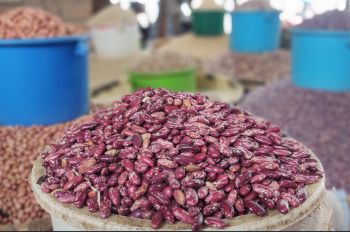The trends and effects of food price inflation on the cost and affordability of nutritionally adequate diets in Malawi
Abstract
Background
Global challenges of hunger, food insecurity, and malnutrition persist, with nearly one in three people lacking sufficient food access. The COVID-19 pandemic exacerbated these issues, particularly in Africa, where 59.6% of the population grapples with food insecurity. Malawi faces high stunting and anaemia rates in children, driven by poverty, inadequate health services, and improper diet. Despite progress, the prevalence remains above regional averages. Research reveals imbalanced diets in Malawi, primarily reliant on maize, risking micronutrient deficiencies. This study examines diet affordability in the context of rising costs and low incomes, aiming to influence policy in addressing undernutrition in Malawi and highlighting the overlooked role of affordability in nutrition access.
Objectives
This assessment aimed to estimate the minimum cost of a nutritious diet using locally available and culturally acceptable food items in Malawi. The objective was to explore how economic constraints affect Malawian households, particularly the poor and
ultra-poor, in accessing such diets. Additionally, it sought answers to questions about cost changes over 12 months and affordability among different wealth groups in the country.
Methods
This study involved secondary data analysis by employing the Cost of the Diet (CotD) research method and software. The World Food Programme’s Minimum Expenditure Basket (MEB) provided monthly food prices for 28 items from April 2021 to March 2022. Comparing the cost of a nutritious diet with per capita income from the Malawi Poverty Report, we estimated the affordability gap. Food price data was from 77 markets in 25 districts, ensuring national representation.
Results
The annual cost of a culturally acceptable nutritious diet for a five-person household from April 2021 to March 2022 was MWK 84,658/month (≈$103). The diet’s cost increased by 25% during the period, from MWK 2,519 to MWK 3,140 per day. Only average urban households had sufficient income to afford the diet, with a 9.7% surplus. Ultra-poor, poor, rural, and average Malawian households faced affordability gaps of 139.5%, 61.4%, 48.5%, and 32%, respectively. Closing the affordability gap would require additional monthly income of 29,134 kwacha (≈$35.5) for an average Malawian household, 37,481 kwacha for a typical rural household, 42,452 kwacha for a poor household, and 58,885 kwacha for an ultra-poor household.
Conclusion
The CotD assessment revealed a significant increase in the cost of a nutritious diet over the past 12 months. Most of the population cannot afford the cheapest nutritious diet. The recent currency devaluation may worsen the situation. Cash, voucher or food distribution could help close the affordability gap for poor and ultra-poor households. Regular monitoring and ongoing updates of the CotD results are necessary for informed decision-making.

Authors retain all copyrights. In making a submission to World Nutrition, they are certifying that all material is theirs except quotations, as indicated, and that they have obtained permission for any photos, tables, or graphics taken from other publications or websites.




